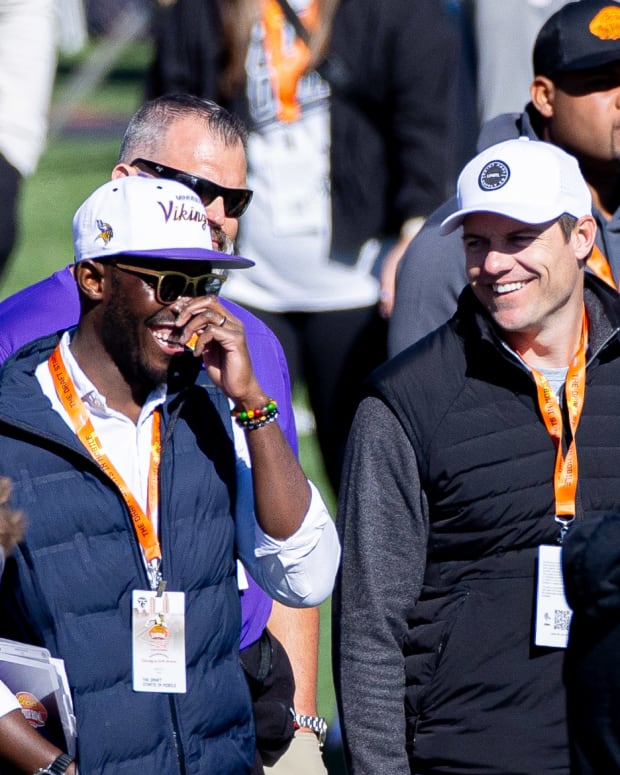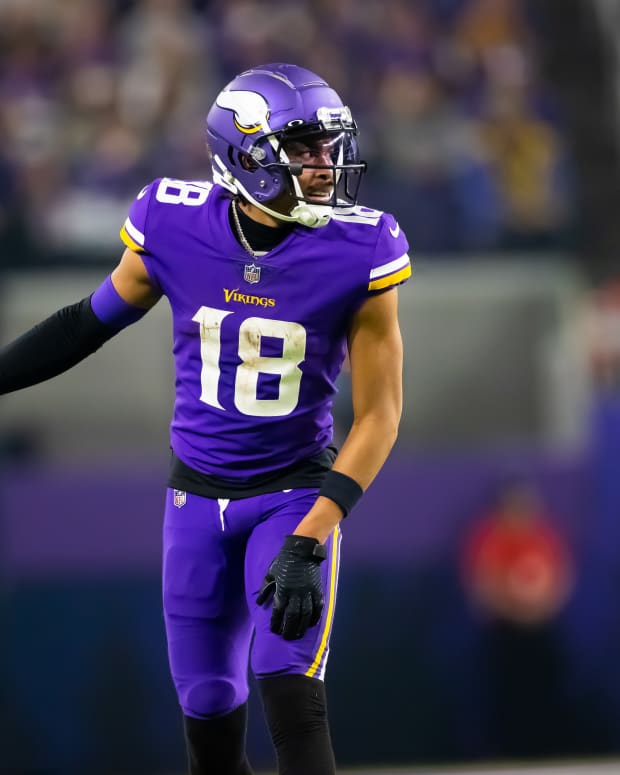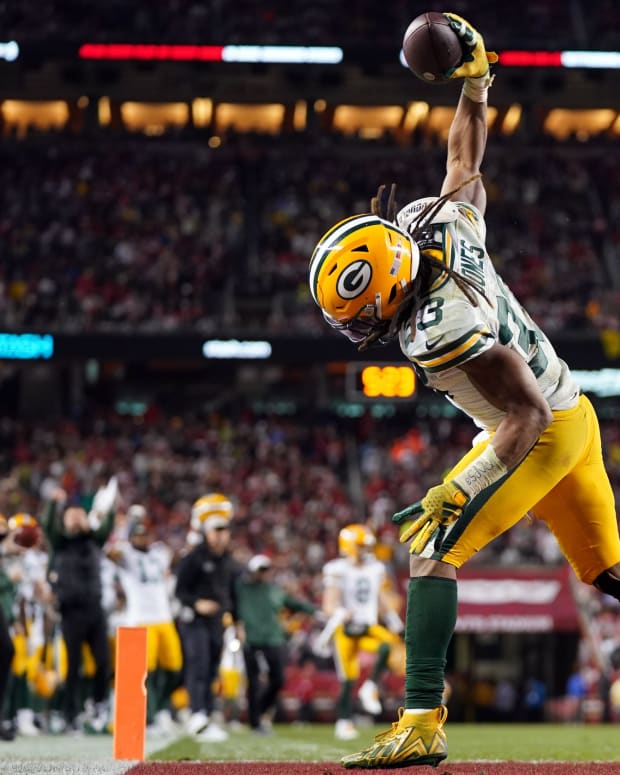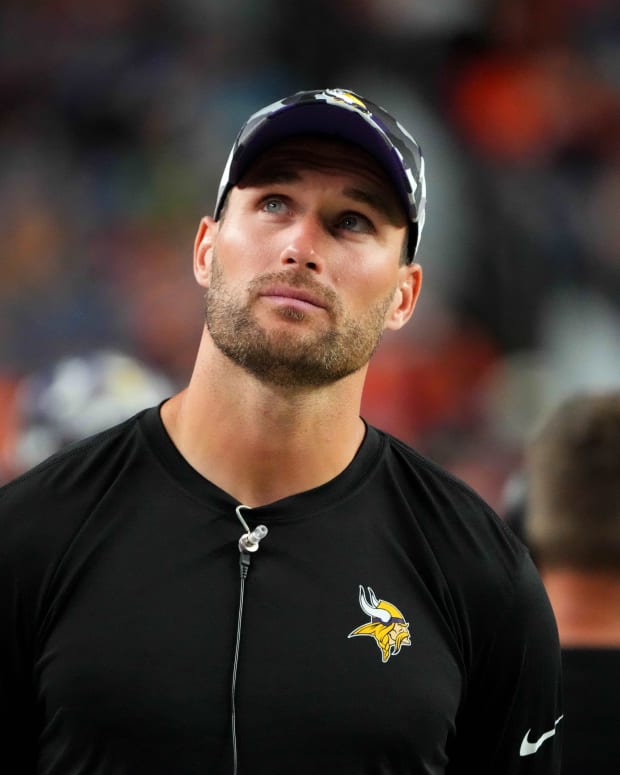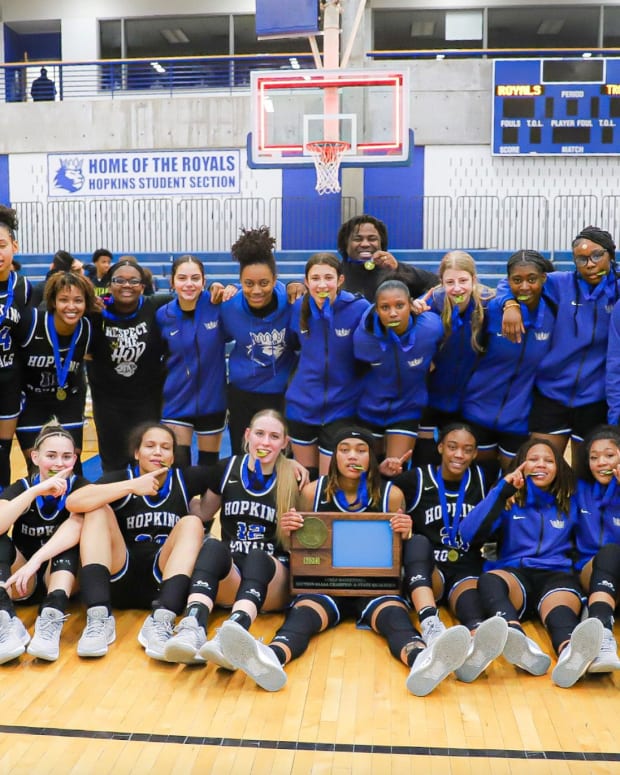SKOL Searching: How the Vikings can beat the Giants
After running through their divisional opponents at home earlier this season, they were tripped up on the second go-around against both the Green Bay Packers and Detroit Lions, with each team taking greater advantage of the Vikings’ weaknesses than they had in the prior meeting. The only road NFC North win came to the lowly, tanking Chicago Bears last week.
That makes Sunday’s opening-round playoff game against the New York Giants an intriguing litmus test. The teams share a lot of parallels – from their first-year head coaches to their oft-criticized quarterbacks to regular season successes that many called fluky. Heck, their previous matchup came down to a 61-yard field goal.
Now with increased familiarity with each other, what will the teams change and what will they keep the same? Here’s a look at what the Vikings need to do to win.
Invite the Giants to pass
Attacking the Vikings’ pass defense is an enticing option for any opposing offense – regardless of the caliber of their quarterback. The unit ranks 30th in yards per attempt allowed (7.3), with the likes of Mike White and Mac Jones putting up season-best numbers against them.
That’s the case for their playoff opponent Daniel Jones and the New York Giants, too. In Week 16, Jones completed a season-high 30 passes and threw for 334 yards, the fifth-most in a game in his career.
Yet despite Jones’ output, it resulted in only 24 points – the second-fewest the Vikings have allowed since Week 10 (excluding the de facto preseason game in Week 18).
It’s why Minnesota should welcome the Giants to pass – because for all of the Vikings’ flaws, New York’s passing game is not designed to exploit their weaknesses.
Minnesota has struggled to limit big plays, but the Giants hardly make them in the passing game. New York has gained more than 20 yards on just 28 passes this season, the fewest in the NFL by a wide margin. Jones has attempted throws of more than 20 yards down the field on only 4.9% of dropbacks, the second-lowest rate in the league among starters (only Matt Ryan trails him).
Instead, Jones overwhelmingly throws the ball short. He ranks fifth in the NFL in dropbacks that result in a pass play of 0-9 yards, throwing those passes 48.7% of the time. Along with ranking 31st in deep passing frequency, he ranks 16th in intermediate passing frequency (between 10-19 yards). He ranks 13th in passing frequency behind the line of scrimmage.
In many ways, the Giants are the exact type of team that Ed Donatell wants to play defense against. Whether by the defense’s design or the offense’s tendency, there won’t be many deep passes. The play will largely unfold within 10 yards of the line of scrimmage and it’s up to the defense to tackle well and communicate. Against a team with top-tier wide receiver talent, that could be an issue, but that’s now what New York has. The Giants have continued to rely on Isaiah Hodgins, Ritchie James and Darius Slayton – each of whom has their strengths but can’t be mistaken for high-end receivers.
When New York does take a shot, it often comes in the intermediate middle part of the field – and it’s where Jones is the most erratic.
When throwing between 10-19 yards downfield, Jones has registered one big-time throw to 10 turnover-worthy plays. Jones’ turnover-worthy play percentage of 9.8% is the second-highest in the league. On all other throws, his turnover-worthy play percentage sits right above 1%.
It may also not be a game that the Vikings need to necessarily blitz often, which they’ve done with an increased frequency in recent weeks. Jones has been pressured on 42% of dropbacks this season. Justin Fields was the only quarterback in the NFL this season under pressure more frequently. It’s a combination of an offensive line that has struggled at times – right tackle Evan Neal ranks 80th of 81 offensive tackles in PFF grade, and only left tackle Andrew Thomas is ranked inside the top 30 at his position – and a quarterback that likes to hold onto the ball. Jones’ time to throw of 2.99 seconds is the second-longest in the NFL, again behind only Fields.
Teams have also tried to heat up Jones in the pocket. He’s been blitzed 29.2% of dropbacks, which is eighth in the NFL. Jones has largely been able to handle those situations, though. He’s 7th among starts in EPA/play when blitzed, most notably because of his escapability. Jones scrambled for first downs twice against Minnesota and it’s something that could ramp up in the playoffs – both scrambles and designed runs.
New York head coach Brian Daboll comes from a Buffalo Bills organization that liked to increase Josh Allen’s rushing workload in the playoffs. It’s hard to do week after week in the regular season as teams try to preserve their quarterbacks, but this is when they get let loose. Jones isn’t the athlete that Allen is, but he’s capable of breaking an explosive play with his legs. Jones has 27 rushes of 10 or more yards, which ranks 14th among all runners in the NFL. That’s third among quarterbacks, behind Fields and Lamar Jackson.
That’s how the Giants break open this game – not with Jones’ arm, but with him and Saquon Barkley on the ground. Barkley has 32 rushes of 10 or more yards, the sixth-most in the NFL. As a team, New York is fourth in explosive rushes. When the Giants needed a big play late against the Vikings, it was Barkley rushing for a 27-yard touchdown on fourth down that tied the game at 24.
The question is, will New York be able to avoid the temptation of throwing on the porous Minnesota defense? In Week 16, the answer was largely no.
The Giants tied a season-low with just 21 rushing attempts, despite having success. They averaged 6.0 yards per carry and generated 0.23 EPA/play when rushing the ball compared to -0.05 EPA/play when passing.
If Minnesota can once again get into a positive game script and goad New York into an aerial attack, that’s the recipe for a Vikings win.
Plan for pressure
When the Vikings’ offense sputters, it’s been for two reasons – the opposing defense found a way to contain Justin Jefferson or Minnesota’s offensive line fell apart.
The latter has been far more consistent than the former and though the Giants’ top cornerback Adoree Jackson could return for Sunday, the offensive line issue remains Minnesota’s biggest challenge.
In Week 16, Cousins was pressured 15 times and was sacked four times. Three of those sacks came when the Giants blitzed, which will once again be a main component of New York’s defense. The Giants lead the NFL in blitz frequency and blitzed Cousins on 52 percent of his dropbacks in Week 16. While Cousins took sacks in those situations, he also threw a pair of touchdown passes against the blitz.
That’s about the best outcome Minnesota can hope for this time around. Right tackle Brian O’Neill was the only offensive lineman who did not allow a sack in that first matchup. He and left tackle Christian Darrisaw combined to allow just two pressures total. But Austin Schlottmann, Ed Ingram and Ezra Cleveland allowed the other 13 pressures on the interior.
Now with both Schlottmann and O’Neill out and center Garrett Bradbury’s status up in the air, the expectation should not be that the offensive line can keep Cousins clean. What will be required is creativity on offense and a plan for when New York inevitably brings pressure.
It hasn’t been Cousins’ strong suit this season. He ranks 21st in EPA/play against the blitz, but against New York, the team found some answers. That was particularly evident in the screen game. The Vikings ran eight screens, which was about 15% of their dropbacks, a season-high rate. While that’s an area Minnesota has struggled in this season, it generated 7.3 yards per play and four first downs against the Giants. The biggest of those went to Jefferson to set up the game-winning field goal in the fourth quarter.
If Minnesota can create any semblance of a running game, that figures to slow down the rush as well. And if there was any team the Vikings could find success on, it’s New York. The Giants rank 32nd in the NFL in rush DVOA on defense. It allows 5.2 yards per carry, 31st in the NFL.
Against them in Week 16 Minnesota averaged 4.4 yards per carry, which is surprisingly the Vikings’ second-best output since Week 11. In the second half of the season, Minnesota ranks 31st in rush DVOA.
A patchwork offensive line against a unit that includes Dexter Lawerence, Leonard Williams and Kayvon Thibodeaux is certainly a matchup that favors New York, but if Minnesota can be productive in the screen and running games, that’s immensely helpful. When the Vikings’ offense has been rendered meaningless, it’s been because of pressure. That leaves the door open for any opponent to shut down Minnesota. The Giants certainly have the talent up front to do it.
Related: Giants player: Vikings fans 'too nice,' thought stadium would be louder
Related: Something about the Vikings' matchup with the Giants just feels right
